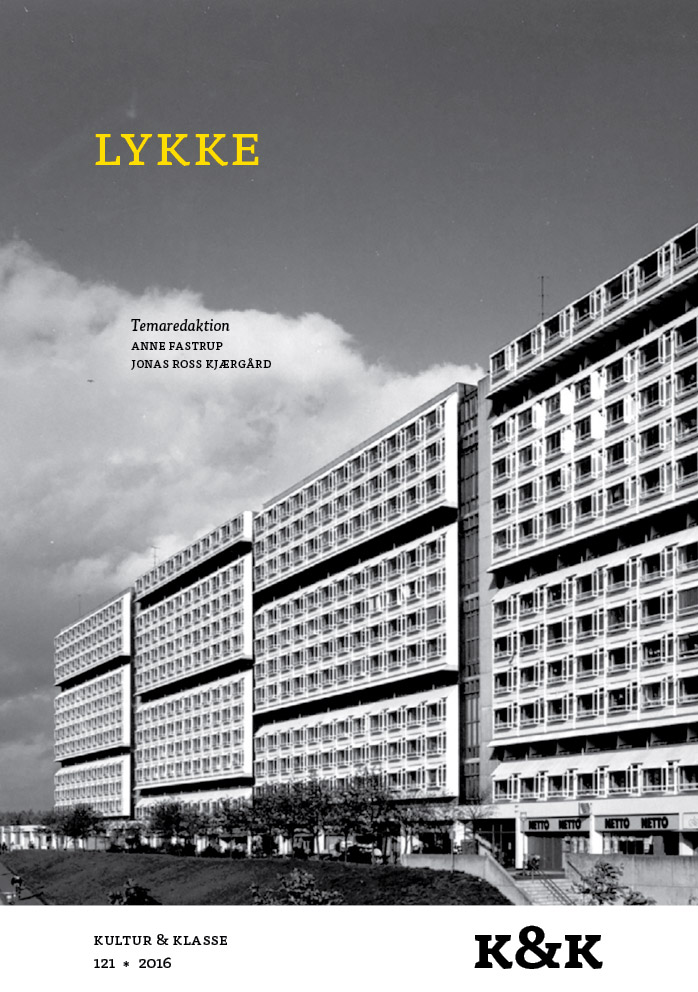Arkivets pleroma
DOI:
https://doi.org/10.7146/kok.v44i121.23742Nøgleord:
archive, library, pleroma, automation, political organisationResumé
In 1956, on a commission from the French Ministry of Foreign Affairs, Alain Resnais made a short film about the French national library called Toute la mémoire du monde. The film performs a vertical movement from indiscernible form and prevalent darkness upon the face of the deep in the library cellars to the summits of institutional power in its domed view of the well-ordered rows of tables and chairs in the Labrouste reading room. This vertical axis is established and maintained by the horizontal library operations that promise to transform the library objects from chaotic heap to collective happiness, or what this article has called the promised movement from plethora to pleroma. Resnais’ film intervenes in an ongoing discourse about the possibility of archival pleroma, thinking machines and the possible beneficial consequences for human existence. But the question is whether such persistent happy belief in the fall of the very last practical obstacles for pleroma does not overlook the view from Resnais’ domed shot: The view indicating that sinister fantasies of the pleroma of knowledge persist in relation to fantasies of political organisation and that the guardians of the archive will always patrol the aisles of the reading room.
Referencer
Assmann, Aleida. ”Canon and Archive”. A Companion to Cultural Memory Studies. Red. Astrid Erll, Ansgar Nünning og Sara B. Young. Berlin: De Gruyter, 2010. 97-108.
Beniger, James R. The Control Revolution, Technological and Economic Origins of the Information Society. Cambridge, Mass: Harvard University Press, 1986.
Carou, Alain. ”Toute la mémoire du monde, entre la commande et l’utopie”. 1895. Mille huit cent quatre-vingt-quinze. Revue de l’association française de recherche sur l’histoire du cinéma 52 (2007): 116-140. 1895.revues.org.
Ceruzzi, Paul E. A History of Modern Computing. London: Cambridge, Mass, 2003.
Darnton, Robert. ”The National Digital Public Library is Launched!”. The New York Review of Books 25. April 2013. Web. 6. februar 2015. <http://www.nybooks.com/articles/2013/04/25/national-digital-public-library-launched/>.
Derrida, Jacques. Mal d’archive, une impression freudienne. Paris: Galilée, 1995.
Diderot, Denis og Jean le Rond d’Alembert. “Encyclopédie”. Encyclopédie ou Dictionnaire raisonné des sciences, des arts et des métiers. Tome cinquième, Discussion-Esquinancie. Briasson etc: Samuel Faulche, 1755.
Foucault, Michel. ”Des espaces autres”. Dits et écrits II, 1976-1988. Paris: Gallimard - Quarto, 2001. 1571-1581.
Foucault, Michel. ”La bibliothèque fantastique [Sans titre]”. Dits et écrits I, 1954-1975. Paris: Gallimard – Quarto, 2001. 321-353.
Hilbert, Martin og Priscila López. ”The World’s Technological Capacity to Store, Communicate, and Compute Information”. Science 332.6025 (2011): 60-65.
Jameson, Fredric. The Geopolitical Aesthetic, Cinema and Space in the World System. Bloomington & Indianapolis: Indiana University Press, 1992.
Kirschenbaum, Matthew G. Mechanisms, New Media and the Forensic Imagination. Cambridge, Mass: MIT Press, 2008.
Krajewski, Markus. Zettelwirtschaft, die Geburt der Kartei aus dem Geiste der Bibliothek. Berlin: Kulturverlag Kadmos, 2002.
Licklider, J. C. R. Libraries of the Future. Cambridge, MA: MIT Press, 1965.
Otlet, Paul. Traité de documentation, le livre sur le livre, théorie et pratique. Bruxelles: Editiones Mundaneum – Palais Mondial, 1934.
Rayward, W. Boyd. ”H.G. Wells’ s idea of a World Brain: A critical reassessment”. Journal of the American Society for Information Science 50.7 (1999): 557-573.
Rayward, W. Boyd. The Universe of Information: The Work of Paul Otlet for Documentation and International Organisation. Moscow: VINITI for the International Federation for Documentation, 1975. Web. 20. April 2015. www.ideals.illinois.edu. Sebald, W. G. Austerlitz. München: Fischer Taschenbuch Verlag, 2011.
UNESCO. Programme “MEMOIRE DU MONDE”. Paris: UNESCO, 1993.
Valéry, Paul. “La conquête de l’ubiquité”. Oeuvres II. Red. Jean Hytier. Paris: Gallimard – Bibliothèque de la Pléiade, 1960. 1284-1287.
Wells, H.G. “Memorandum on the project of a world encyclopaedia”. The Correspondence of H.G. Wells, Vol. 4. Red. David Smith. London: Pickering and Chatto, 1998.
Wells, H.G. The shape of things to come. London: Hutchinson & Co., 1933.
Wells, H.G. The Work, Wealth and Happiness of Mankind. London: William Heinemann, 1932.
Wells, H.G. World Brain. London: Methuen, 1938.
Wright, Alex. Cataloging the World, Paul Otlet and the Birth of the Information Age. Oxford: Oxford University Press, 2014.
IBM 650 - Workhorse of modern industry. http://www-03.ibm.com/ibm/history/exhibits/650/650_intro.html
IBM 650 RAMAC announcement – Press release. http://www-03.ibm.com/ibm/history/exhibits/650/650_pr2.html
Downloads
Publiceret
Citation/Eksport
Nummer
Sektion
Licens
Tidsskriftet følger dansk ophavsret.





